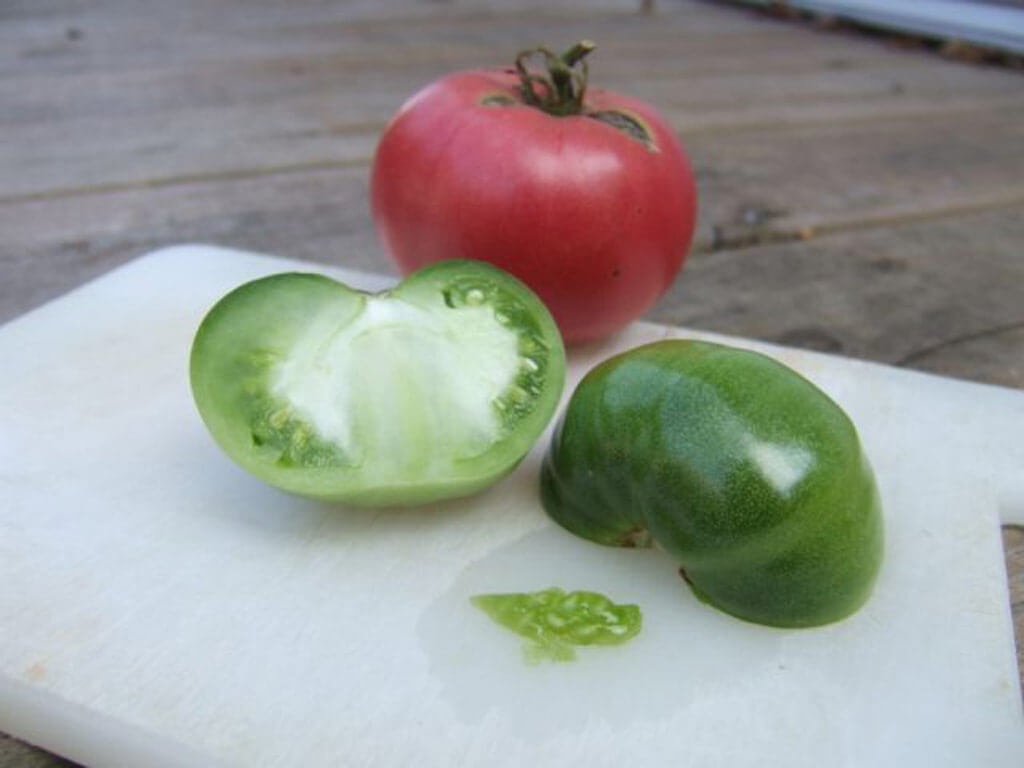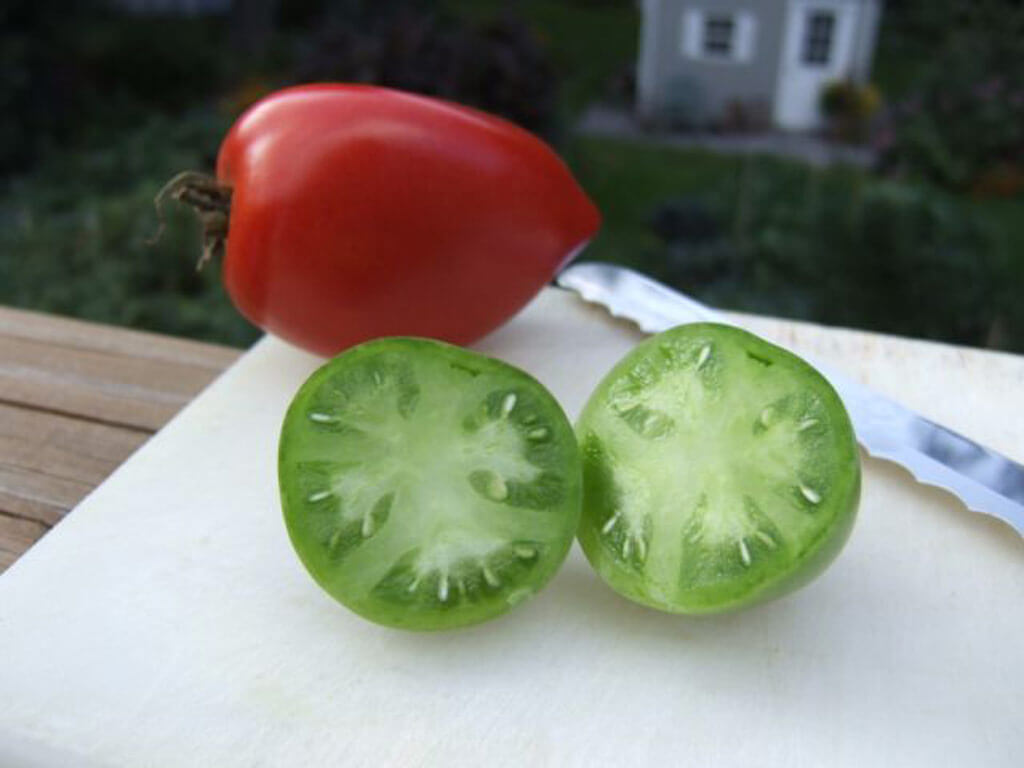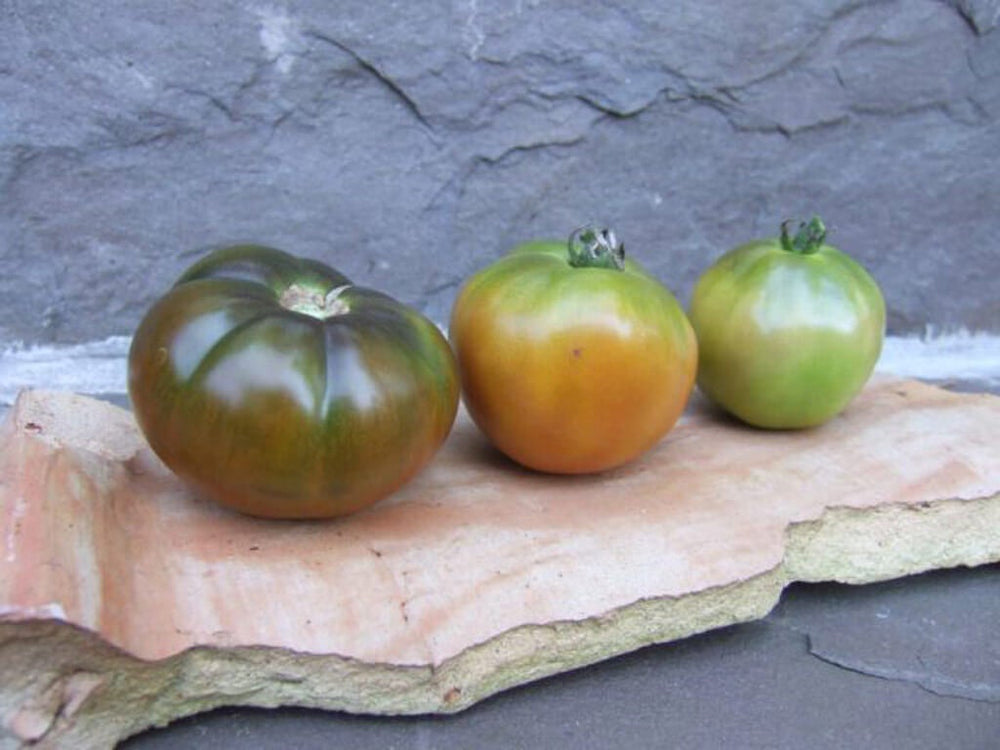For most gardeners, covering tomato plants as fall's first chilly nights arrive is second nature. After all, you want to savor those garden-fresh flavors as long as you can, and early nippy nights are often followed by weeks of warmer temperatures.
What you may not know, though, is that low temperatures can harm mature green tomatoes (the full-sized ones that just haven't turned red yet) to the point that they won't ripen, even if the plant is covered. Temperatures below 50º F can destroy some ripening enzymes, and when the thermometer dips below 40º F, the chill can actually cause the tomatoes to decay more quickly in storage.
These low temperature effects add up: The more frequently a green tomato experiences temperatures below 50º F, the more likely it is that it won't ripen properly. And while all or partly red tomatoes can tolerate these same low temperatures, they really do best at temperatures above 50º F. After a few days at or below 40º F, flavor, firmness, and shelf life start to diminish.



The answer is, of course, to remove all the tomatoes you can when chilly nighttime temperatures start to become the norm. But while just about any fruit with even the slightest hint of red should ripen off the vine, green tomatoes will only do so if they're sufficiently mature. There are a couple of ways to tell if they've reached that point. The easiest is to assess the color. Fruit that has reached the "white stage," when it turns from medium green to a very light (almost white) green, is mature enough to ripen off the vine.
If you're not quite sure if the color is pale enough, though, here's another option: Choose a fruit that's representative of the remaining green fruits on the plant, then grab a knife and slice through it. If the seeds are contained in a gel sac, all of the similar tomatoes on that vine should ripen. (A gel sac refers to the jelly-like tissue that surrounds the seeds—it's part of the delicious drippings when you slice a ripe tomato!) If no gel sac is present and you can slice through a seed, however, similar (and smaller) tomatoes on the plant will never turn red. (That doesn't mean you have to give them up for lost, though—fry them, or use them in green tomato salsa, relish, jelly, or pie, or make pickles.)
So when temperatures start dipping below 50º F, leave the tomatoes on the vine if warmer days and nights are forecast. But if temperatures have started on a steady downward slide, go ahead and pick the mature green tomatoes and bring them indoors. Arrange them in a single layer in a shallow cardboard box, grouping them by color stage if you have more than one box's worth. Lay a sheet of newspaper over the top and store at 55º to 70º F.
Check ripening tomatoes every few days, and cook or compost any that develop soft spots before ripening. Fully mature green tomatoes typically ripen in about two weeks at 70º F, or in about four weeks at 55º F. As tomatoes start to color, bring them somewhere you'll see them regularly (like the kitchen windowsill or counter) and let them sit for a few more days to finish up. Tomatoes ripened this way may not taste quite the same as the ones you picked in the height of summer, but they'll be head and shoulders above any you could buy at the supermarket.
Article written by Julie Martens.





 Herbs
Herbs
 Vegetables
Vegetables
 Fruit
Fruit
 Flowers
Flowers
 Succulents
Succulents


